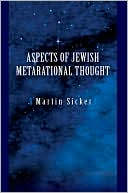Category Books
- Fiction Books & Literature
- Graphic Novels
- Horror
- Mystery & Crime
- Poetry
- Romance Books
- Science Fiction & Fantasy
- Thrillers
- Westerns
- Ages 0-2
- Ages 3-5
- Ages 6-8
- Ages 9-12
- Teens
- Children's Books
- African Americans
- Antiques & Collectibles
- Art, Architecture & Photography
- Bibles & Bible Studies
- Biography
- Business Books
- Christianity
- Computer Books & Technology Books
- Cookbooks, Food & Wine
- Crafts & Hobbies Books
- Education & Teaching
- Engineering
- Entertainment
- Foreign Languages
- Game Books
- Gay & Lesbian
- Health Books, Diet & Fitness Books
- History
- Home & Garden
- Humor Books
- Judaism & Judaica
- Law
- Medical Books
- New Age & Spirituality
- Nonfiction
- Parenting & Family
- Pets
- Philosophy
- Political Books & Current Events Books
- Psychology & Psychotherapy
- Reference
- Religion Books
- Science & Nature
- Self Improvement
- Sex & Relationships
- Social Sciences
- Sports & Adventure
- Study Guides & Test Prep
- Travel
- True Crime
- Weddings
- Women's Studies
Aspects of Jewish Metarational Thought »

Authors: Martin Sicker
ISBN-13: 9780595350346, ISBN-10: 0595350348
Format: Paperback
Publisher: iUniverse, Incorporated
Date Published: April 2005
Edition: (Non-applicable)
Author Biography: Martin Sicker
Book Synopsis
Judaism has always had adherents that, driven by both awe and love of God, strove to penetrate the mystery of divine wisdom and grasp what the philosopher deemed to be beyond the reach of man's rational faculty, as well as to explore other mysteries that seem to leap out from the pages of Scripture.
These metarational leaps of intellect and imagination generally fit into the categories of the exoteric and the esoteric, referring to teachings traditionally considered suitable for public instruction and those deemed inappropriate for such purpose. The exoteric includes those attempts at intellectually and spiritually bridging the gap between God and man, that one finds strewn throughout the pages of the classical literature of Judaism. The esoteric includes those speculations and practices that have been more or less systematized and formulated and presented as mystical doctrines, that have been characterized since the Middle Ages as Kabbalah.
The opening chapters of Aspects of Jewish Metarational Thought consider the question of the relationship between finite man and the unknowable God, and how the divine-human communication essential to that relationship takes place. Other chapters consider the purpose behind human existence and the critical aspects of the biblical account of the creation, issues relating to the idea of a visionary ascent to the celestial realm, the influence of metarational considerations on normative Jewish religious practice, and the special attributes believed to inhere in the Hebrew language and the role that these have played in metarational biblical interpretation from antiquity to the present.
Table of Contents
Subjects
 Judaism & Judaica
Judaism & Judaica  Mysticism & Kabbalah - Judaism
Mysticism & Kabbalah - JudaismChristianity
 Judaism & Judaica
Judaism & Judaica  Theology, Jewish
Theology, JewishChristianity
 All Religion
All Religion  General & Miscellaneous Religion
General & Miscellaneous ReligionJudaism & Judaica
 Theology - Jewish
Theology - Jewish  God (Judaism)
God (Judaism)Religion Books
 Judaism & Judaica
Judaism & Judaica  Mysticism & Kabbalah - Judaism
Mysticism & Kabbalah - JudaismReligion Books
 Judaism & Judaica
Judaism & Judaica  Theology, Jewish
Theology, JewishReligion Books
 All Religion
All Religion  General & Miscellaneous Religion
General & Miscellaneous ReligionChristianity
 Christianity
Christianity  All Religion
All ReligionNonfiction
 Religion
Religion  All Religion
All ReligionReligion Books
 Christianity
Christianity  All Religion
All Religion
